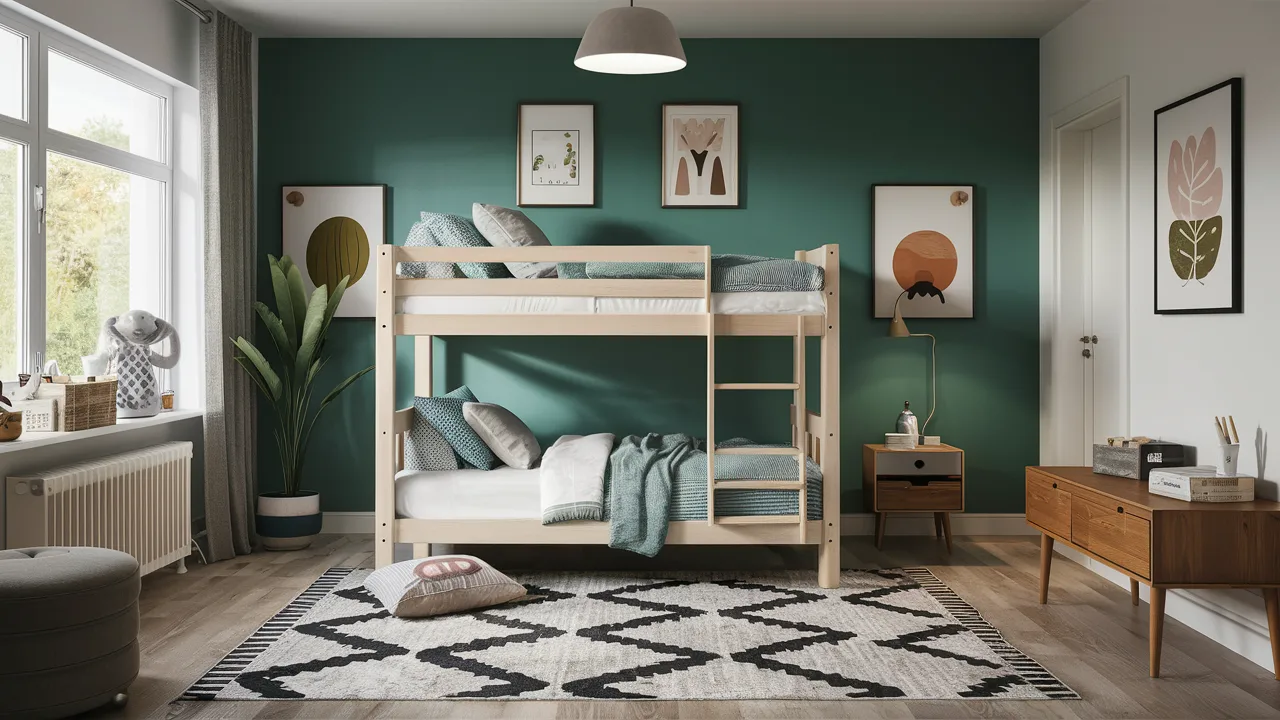How to Make Custom Loft Beds for Kids?

Creating a custom loft bed for your child not only saves on space but also adds a personal touch to their bedroom. This project is perfect for those looking to build a unique sleeping area that fits both their child’s personality and the room’s dimensions. From choosing the right materials to adding colorful touches, this guide will help you craft a cozy and sturdy loft bed that your kids will love.
[the_ad id=”2151″]Why Choose a Custom Loft Bed?
A custom loft bed can transform a cluttered room into a multifunctional space. By elevating the sleeping area, you free up valuable floor space, providing room for everything from desks to play areas. Customization means you can tailor the bed to your child’s needs, whether that’s extra shelving for avid readers or a slide for playful mornings.
The Must-Have Tools for DIY Success
Basic Tools to Get You There

At the very least, you’ll need a few key tools: a drill, a circular saw, and a sander. These are the backbone of your DIY loft bed project.
Pocket Hole Magic

Use a pocket hole jig for strong, hidden joints. This handy tool will make your loft bed sturdy and professional-looking.
How to Build Perfect Loft Beds for Kids?
Building a loft bed can create a lot of extra living space for your child, and it’s a room addition your child is sure to love. It is important to note that loft beds are only appropriate for children over the age of five. In this section, we will discuss some easy, inexpensive ways to create loft beds for your kids.
Get your Measurements Right.
The first thing you should do before beginning to build a loft bed is to measure. You must have a ceiling height of at least eight feet so that your loft bed will be safe and roomy enough and there will be adequate room underneath for living area and/or storage.
Having the sleeping area too close to the ceiling can cause problems with excessive heat, lack of ventilation and injuries caused when your child accidentally bumps his or her head on the ceiling.
If you don’t have enough ceiling clearance, you can still create a raised bed with a closet, chest of drawers, or storage cabinet underneath. That will free up some of the rest of the room for the living area.
Decide What Kind of Loft Bed Will Suit Your Space
If your ceiling height is adequate, you can build a genuine loft bed with room to play and study underneath. Your loft bed can be freestanding or it can be partially incorporated into and supported by an existing wall.
For a freestanding loft bed, you will need to build a very sturdy frame following safety guidelines adequate for play structures.
You will first build a platform about five feet high with sturdy supports on all four corners in a size appropriate for the mattress you have chosen.
Underneath, you can build in furnishing such as a desktop, cabinets, and so on. Alternatively, you might choose existing furnishings that will fit in the space beneath the loft bed.
Design your Bunk Bed
For greater stability, you can build the loft bed into the existing wall of the room. This is not as complicated as it sounds, since it really just involves locating studs in the wall and securing the frame to the wall using sturdy screws. If you build your loft bed into a corner so that it is supported on two sides by the wall, you will have the greatest degree of safety and stability.
An easy way to create a loft bed for your child is to simply use an existing bunk bed and remove the lower bed. Be very certain that the entire frame of the existing bed is sturdy. If there are wobbly areas, be sure to secure them appropriately.
Materials and methods used for this will be determined by the material from which the frame is made. For a wooden frame, you would naturally use wood and wood screws to provide added support to weak areas.
For a metal frame, you might need to fashion metal strapping. Be sure any rough wooden edges are sanded smooth and any sharp corners are rounded and or covered for safety. A modified bunk bed of this sort should be placed in a corner and secured to the wall for maximum safety and support.
Ensure the Structure is Safe
Safety should be your watchword with building a loft bed for your kids. No part of the structure must be wobbly or unsteady. The entire structure should be strong enough to withstand climbing and playing by multiple children. This is why you should follow guidelines for building a play structure rather than a piece of furniture.
Be sure the ladder leading to the top bunk is secure strong and easy for children to climb. It should also be easy for you to stand comfortably to change bedding or attend to a sick child. Make certain the loft bed is equipped with sturdy rails to prevent falls. Rails should not have gaps large enough for a child to put his or her head through.
Once your loft bed is in place, monitor use carefully at first so that you can make adjustments for safety and ease of use quickly. This will help you avoid potential injuries.
Every week when you change the bedding, be sure to examine the structure. Tighten any loose fasteners and smooth down any rough areas.
With careful planning, sound building technique, and proper maintenance, you can build a great loft bed for your child that will maximize the amount of living space in your child’s room and provide many happy hours of play and relaxation.
Conclusion: Your Successful DIY Adventure
Constructing a custom loft bed can be a rewarding challenge that offers not just a unique piece of furniture but also an opportunity for family bonding. By involving your children in the design and building process, you give them a sense of ownership and a safe, custom space they can call their own.
FAQs
Can I make a loft bed for a full-size mattress?
Absolutely! Just adjust your measurements accordingly to accommodate the larger mattress size while ensuring that the bed’s structure and support are proportionally scaled up.
How high should the guard rails be on a loft bed?
For optimal safety, guard rails should be at least 5 inches higher than the mattress top to prevent falls.
Is it possible to integrate a study area underneath a loft bed?
Yes, one of the advantages of a loft bed is the ability to utilize the space underneath for a desk or study area, effectively creating a compact workspace within the same footprint.
What’s the best way to protect my child from falls?
In addition to installing guard rails, ensure the ladder is sturdy and the mattress fits snugly within the bed frame. Giving your child a “safety talk” about how to properly use their new loft bed will also help prevent accidents.
